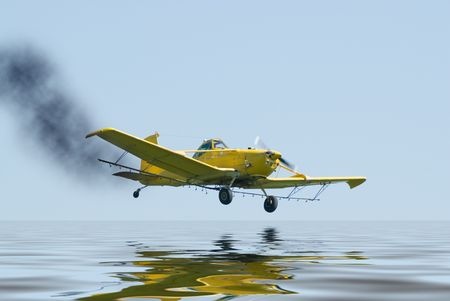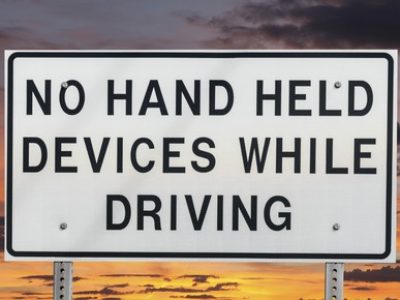

Distracted Flying
Pilots and air traffic controllers are just as susceptible to distractions while flying or directing flight traffic as people are when driving vehicles. But distractions on a plane or the control tower can create consequences even more dramatic than those on the road. The National Transportation Safety Board (NTSB) has reported many instances of cell phone usage causing distracted flying accidents including a “… bantering personal phone call about a dead cat while directing traffic.” The NTSB report noted that during the time the controller was on the phone, he made several errors. For example, after he made the handoff of the Piper to Newark tower for flight following, he failed to provide the pilot the new frequency for two minutes. When he finally did call with the new frequency, he spoke very quickly; the pilot then read back an incorrect frequency to the controller, but the controller did not notice the error. Because the pilot was on the wrong frequency, no one could warn him about the approaching collision.
Pilots are not supposed to use cell phones in the cockpit and as a result there are few reports of problems caused by cell phones in airplanes. One case that was reported, however, involved an Airbus A320 captain landing at Singapore Airport who had left his cell phone on. As they descended through 2,000 feet on approach, he heard multiple alerts as the phone began receiving all of the text messages that had been sent while they were out of range of cell towers. The captain retrieved the cell phone, either to read the texts or, as he claimed, to unlock and turn off the phone. Whatever the reason, he made numerous errors during this time and finally aborted the landing at 392 feet because the landing gear was not extended.
Aviation fatalities
There are significantly more general/private aviation fatalities than there are commercial air carrier fatalities. In 2010, there were just two aviation fatalities for commercial air carriers and taxis versus 410 general aviation fatalities. Loss of control in flight is the leading cause of death, accounting for 41 percent of fatal personal flying accidents.
Calls for safety guidelines to curb distracted flying
After four small-plane collisions that caused eight deaths, the NTSB issued an official “safety alert” advising pilots to maintain fundamental “see and avoid” vigilance by scanning for traffic throughout a flight, using lights and clearly communicating their intentions. The presence of technology has introduced challenges to the “see-and-avoid” concept. Aviation applications on portable electronic devices such as cell phones, tablets, and handheld GPS units, while useful, can lead to more head-down time.
In 2015, U.S. safety officials reminded pilots to look out for other planes and make their own aircraft known during flights, saying air collisions are more likely to occur if pilots are distracted by cell phones, tablets or other wireless devices as they are not maintaining adequate visual lookout.
Software makers have produced a host of pilot applications for phones and tablets used for general and commercial aviation that offer radar and navigation services, approach charts, terrain awareness and weather graphics but these devices are not allowed for personal communications or activities. It is the pilot’s responsibility to determine whether a device’s electronics will interfere with flight instruments.
If you or a loved one were injured in an accident, you have enough to deal with. Let an experienced accident attorney fight for the full compensation that you deserve. It is not uncommon to receive a settlement from the insurance company that is five to ten times bigger with the help of a lawyer. Call the caring accident attorneys at Tario & Associates, P.S. in Bellingham, WA today for a FREE consultation! We have been representing residents of Whatcom County, Skagit County, Island County and Snohomish County since 1979. You will pay nothing up front and no attorney fees at all unless we recover damages for you!




